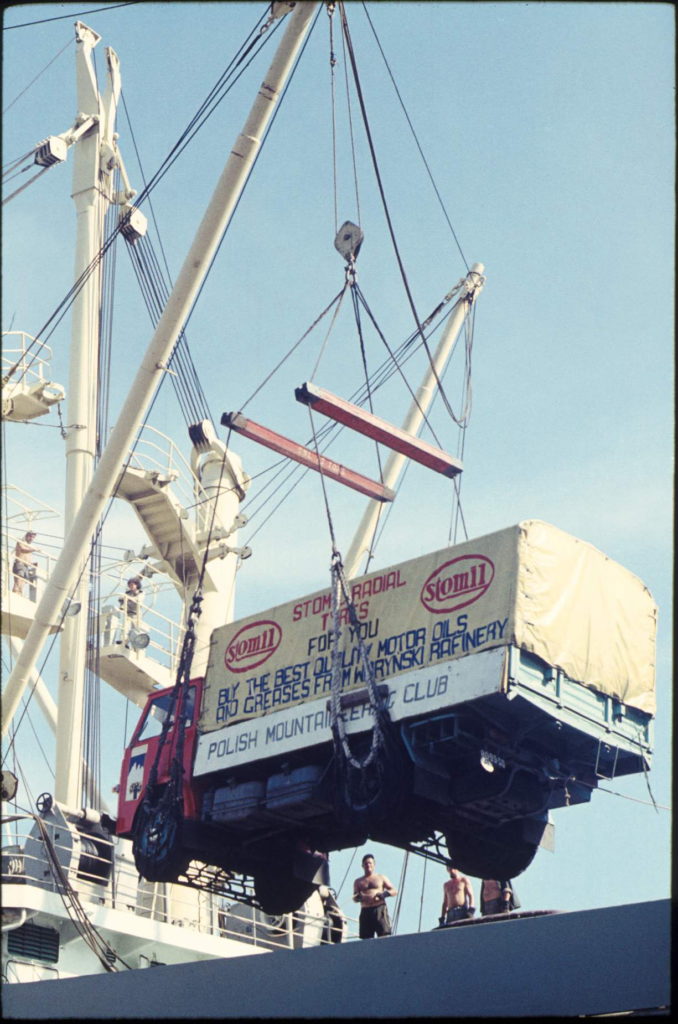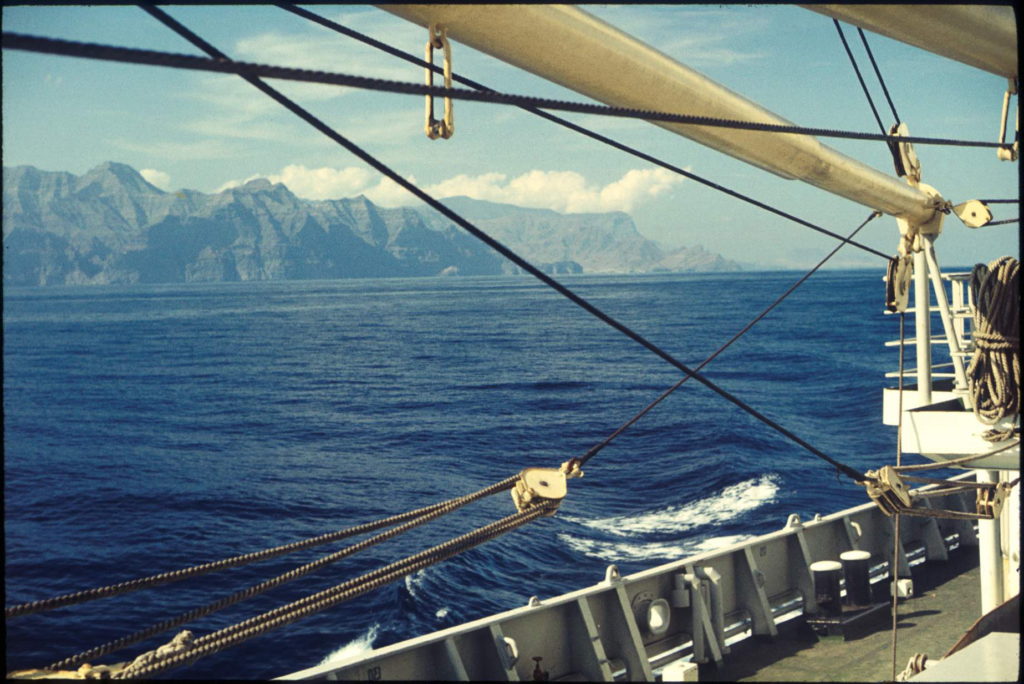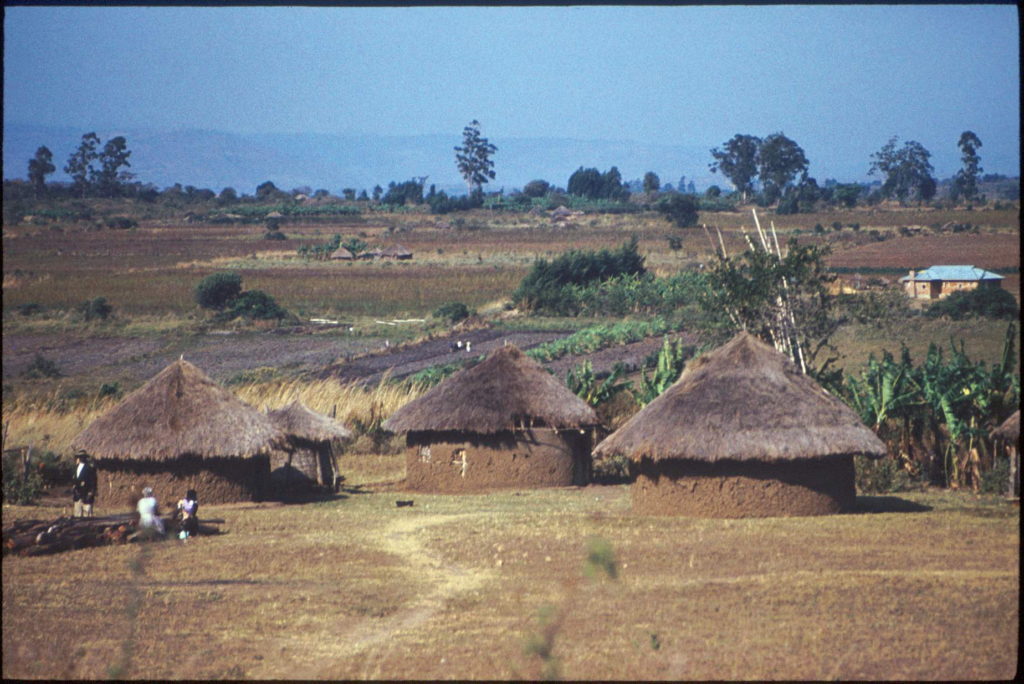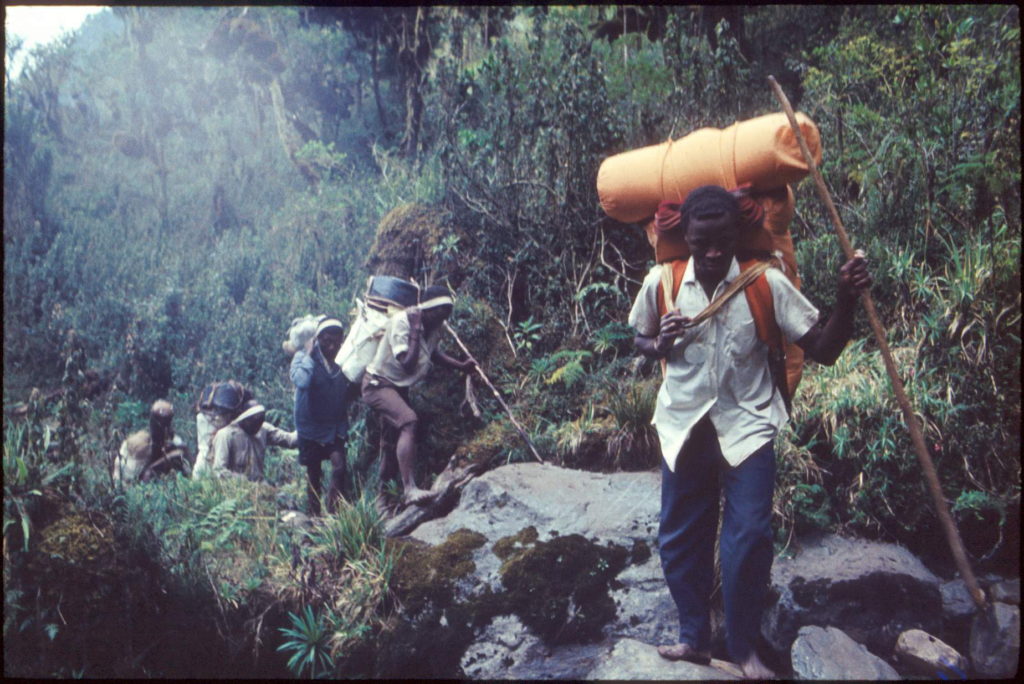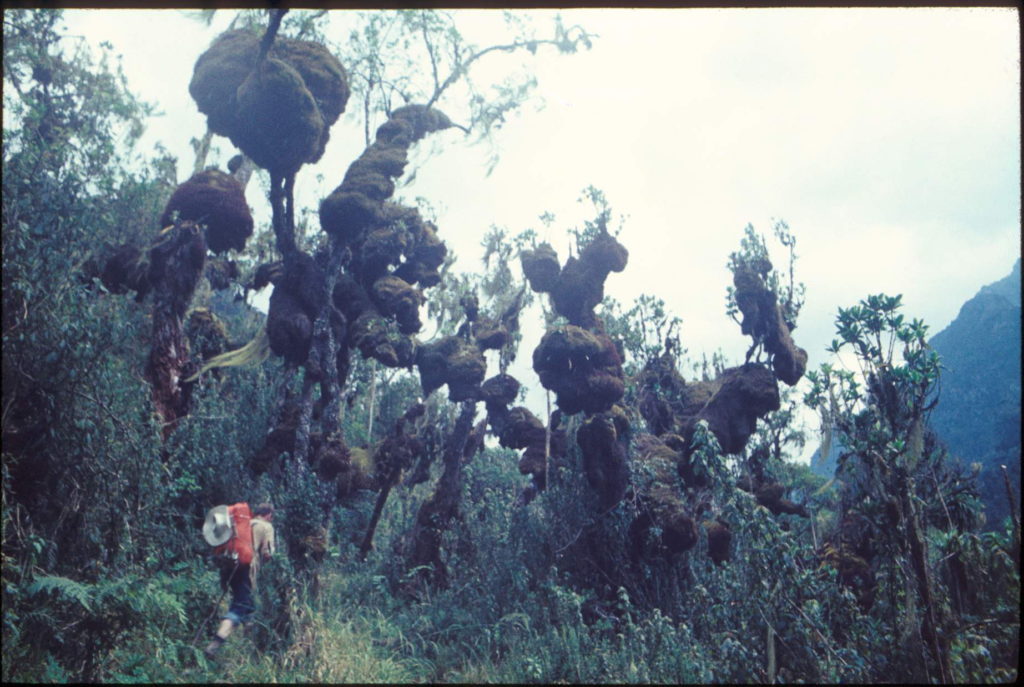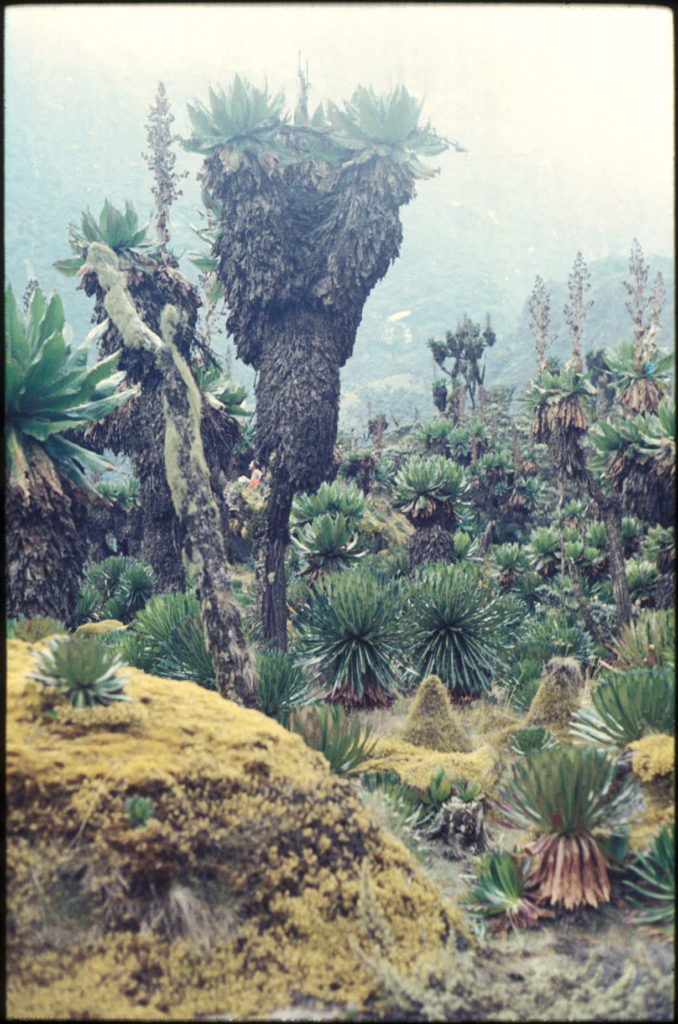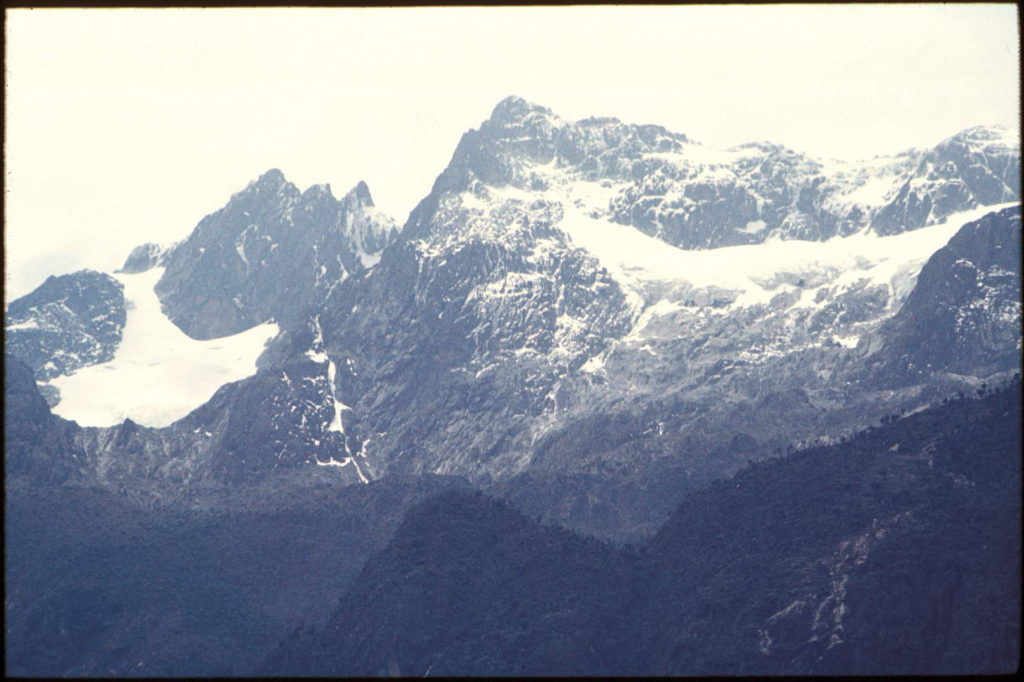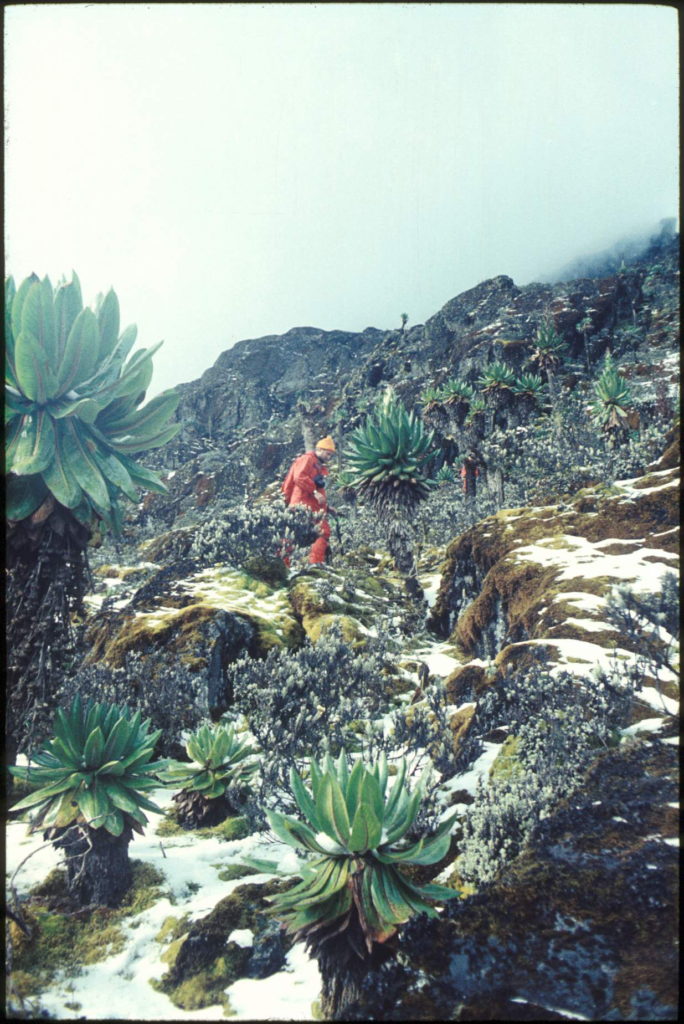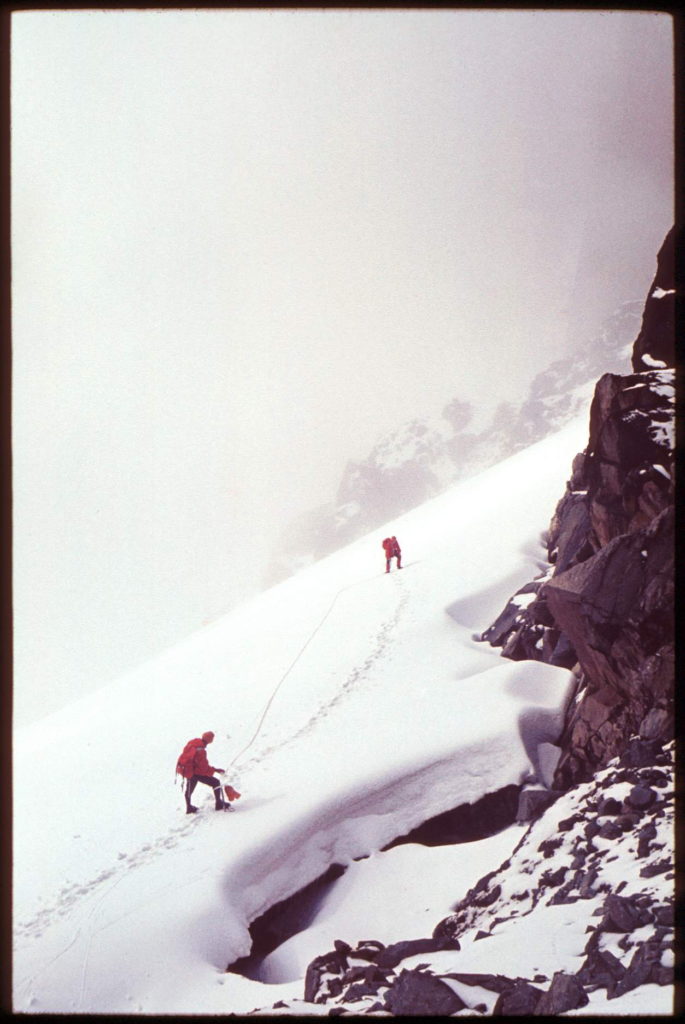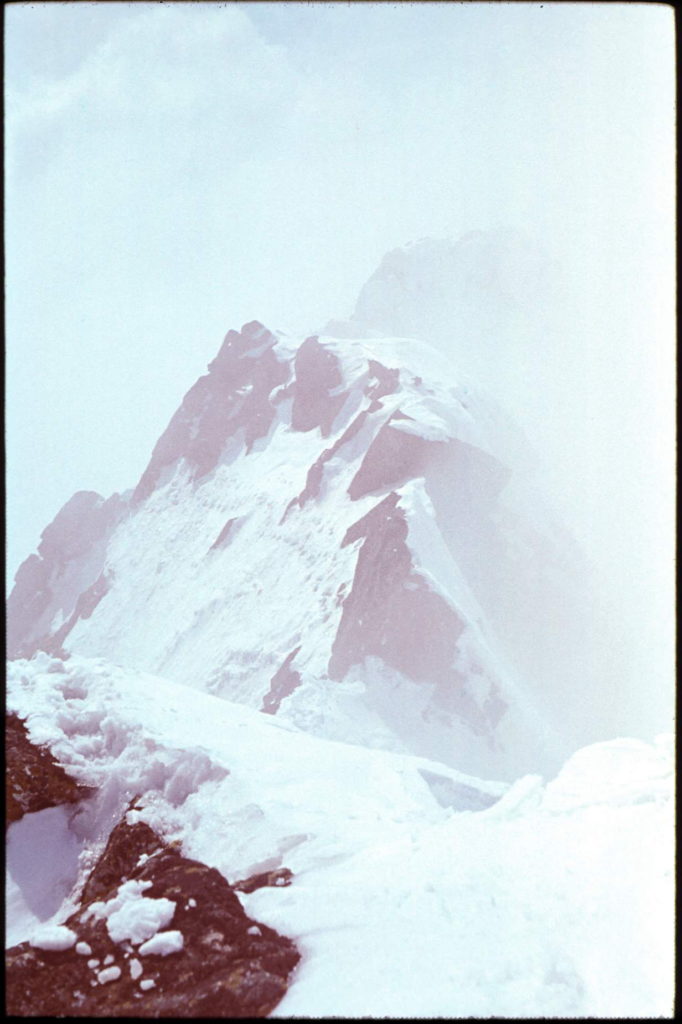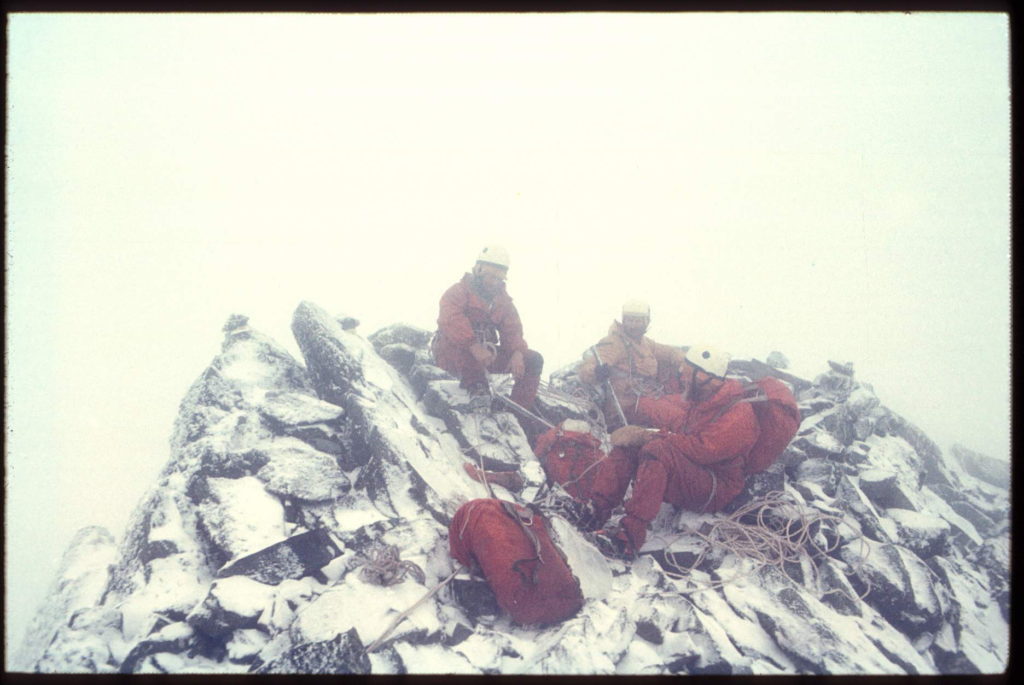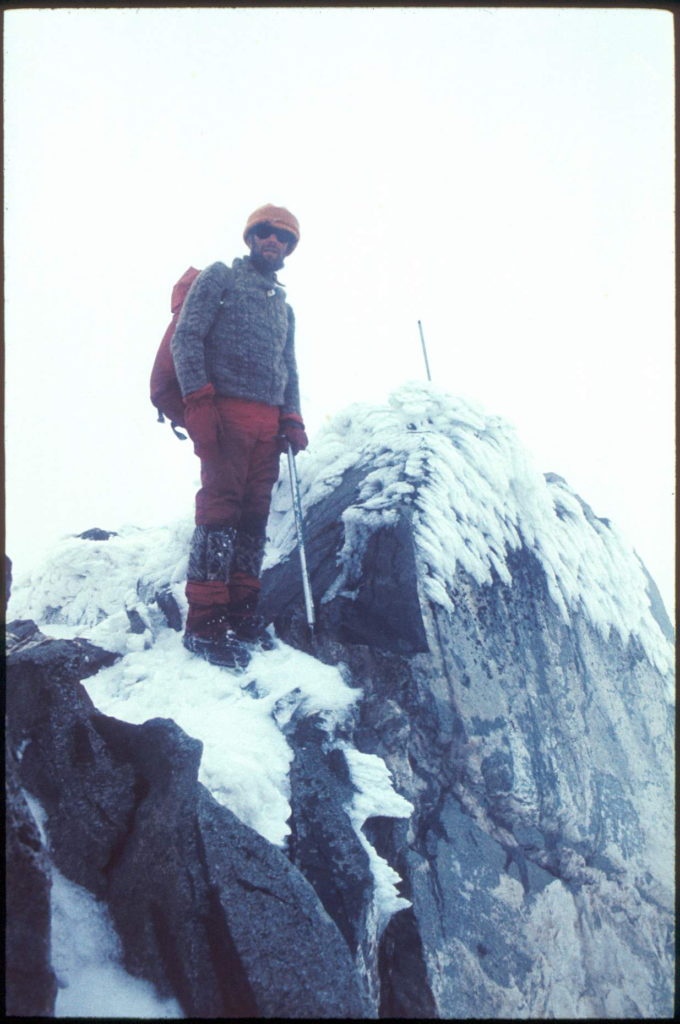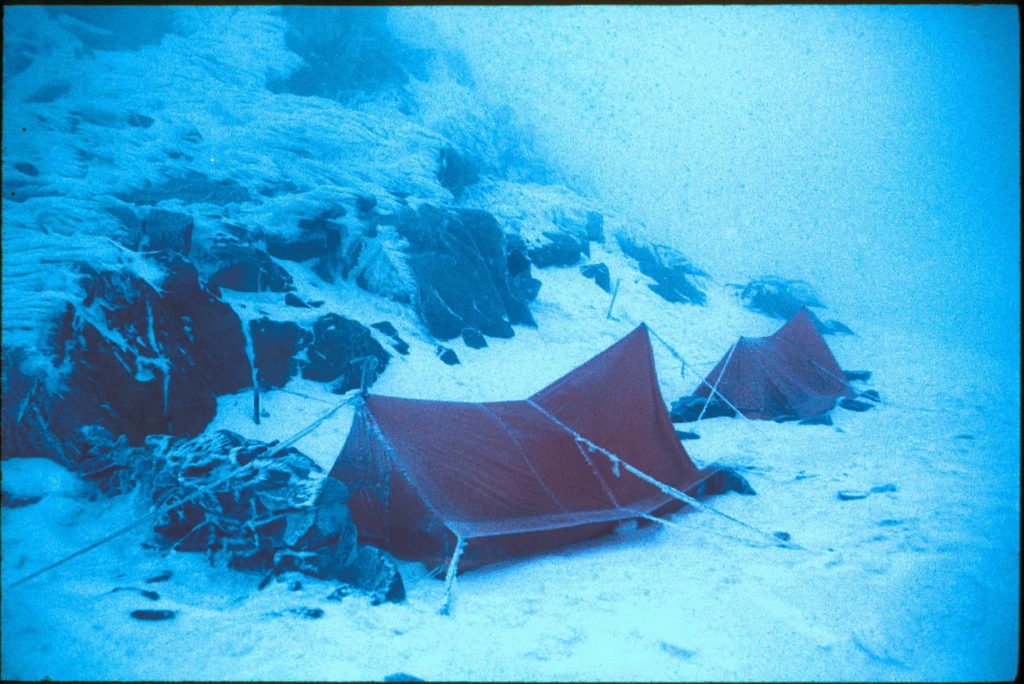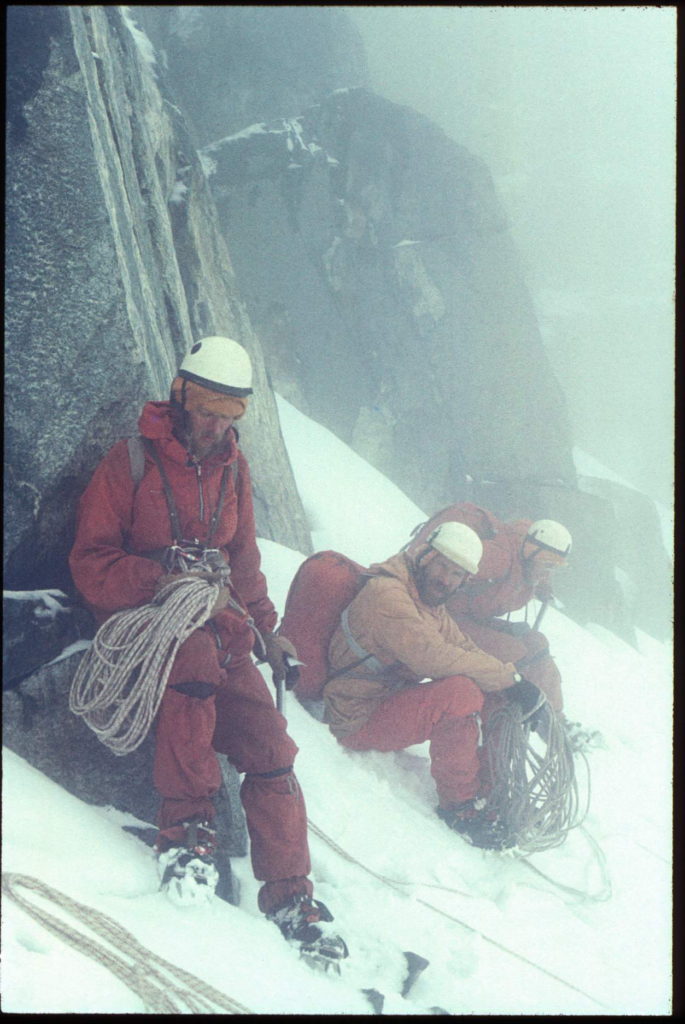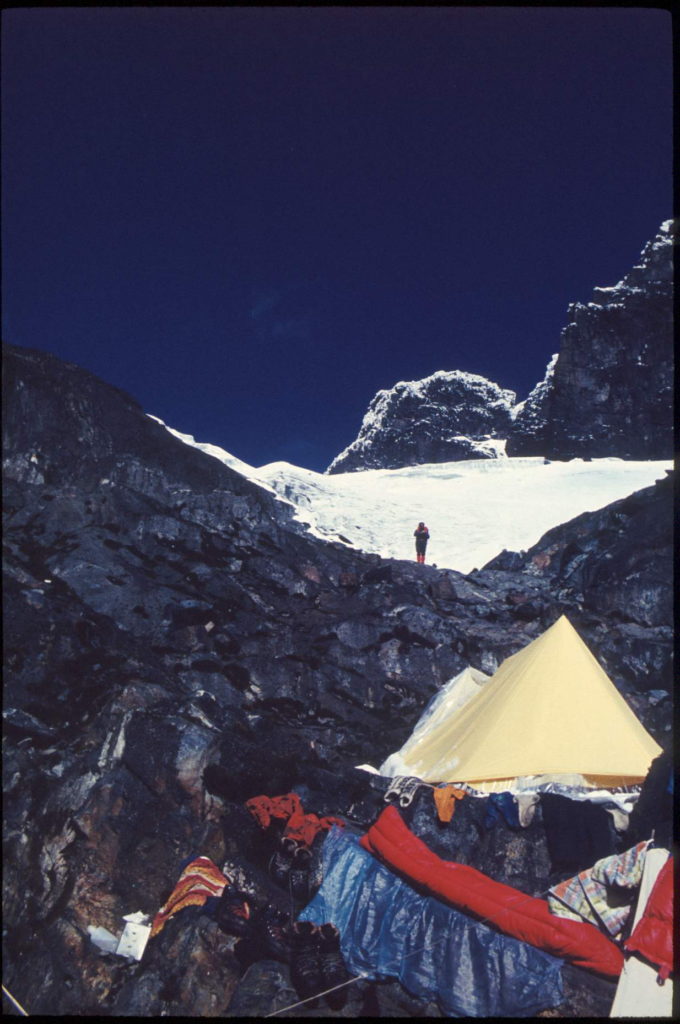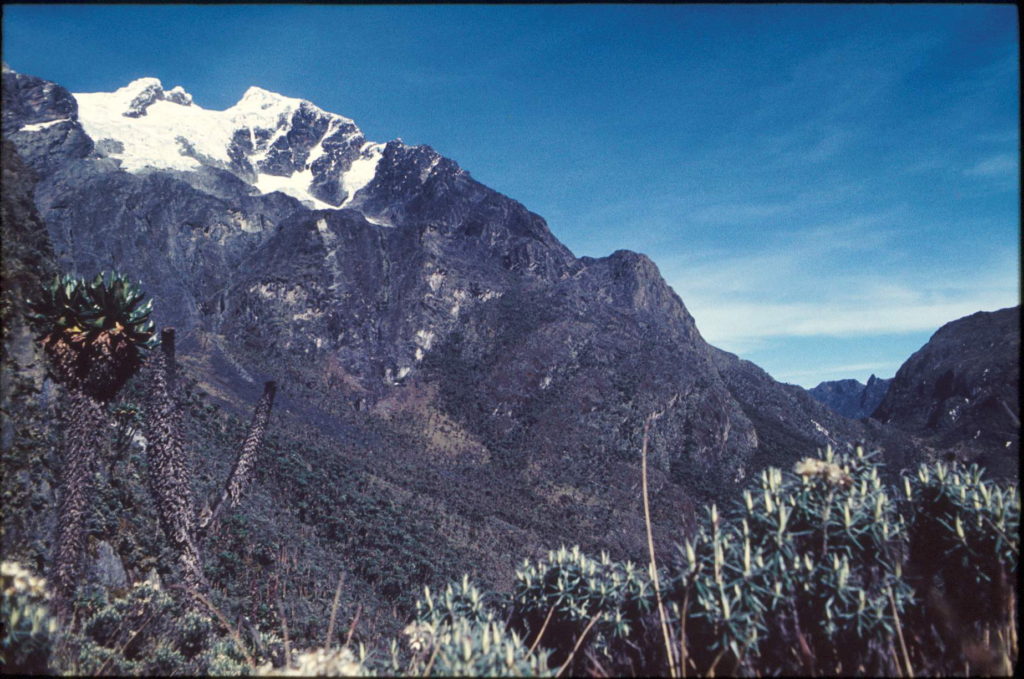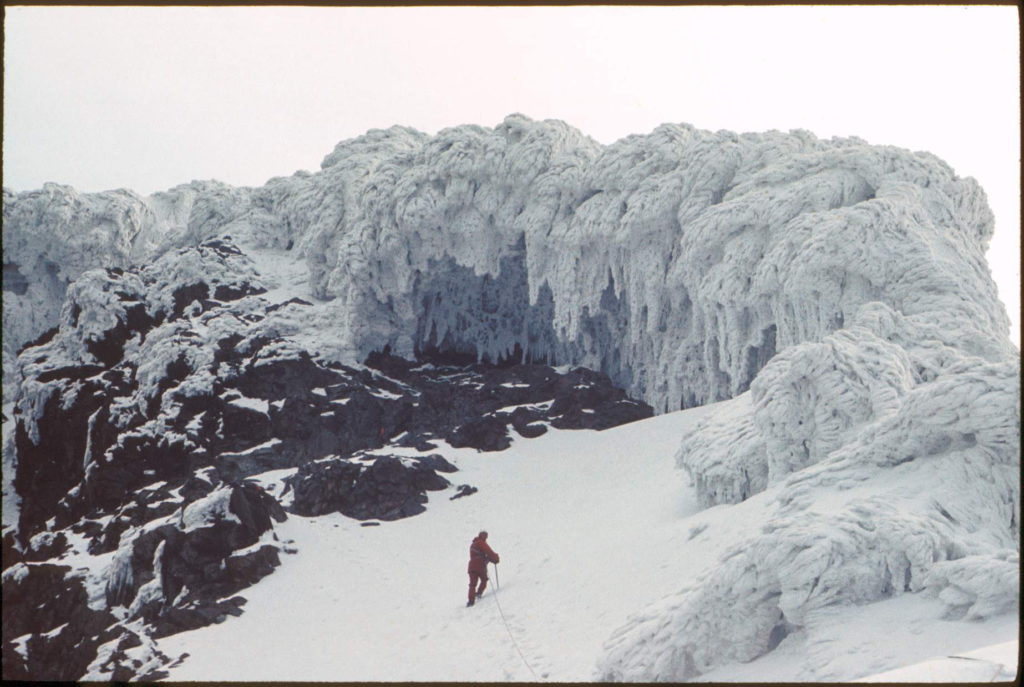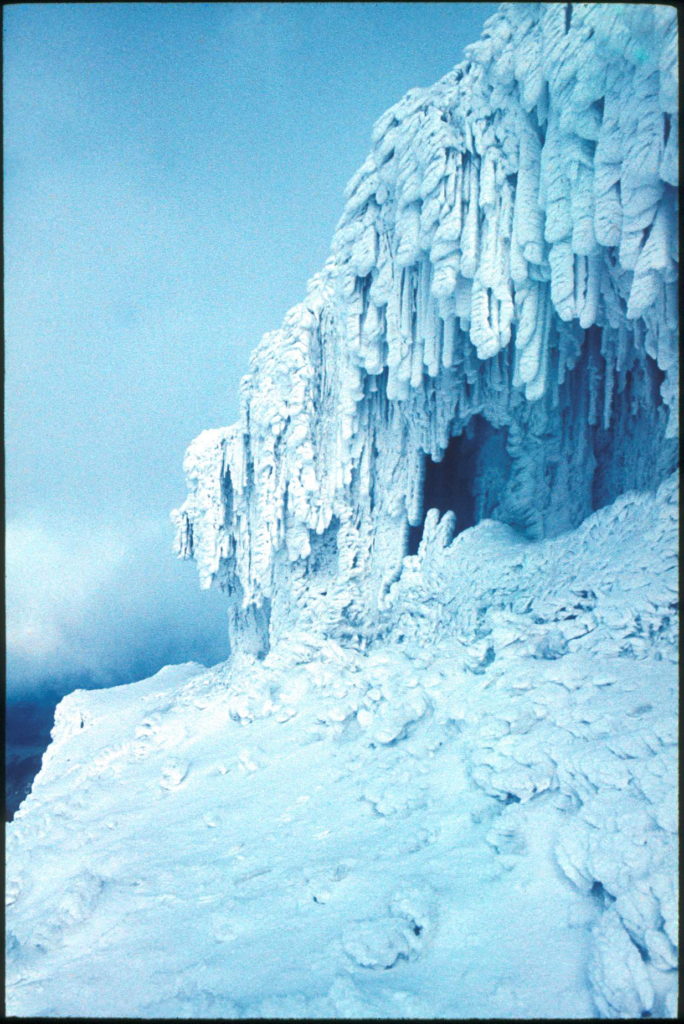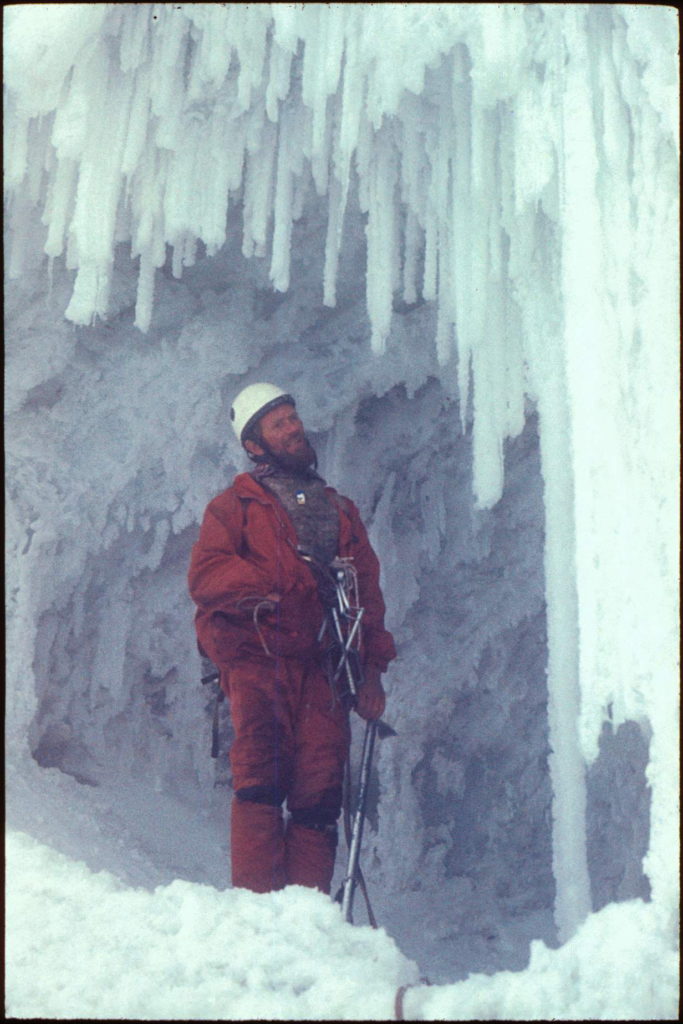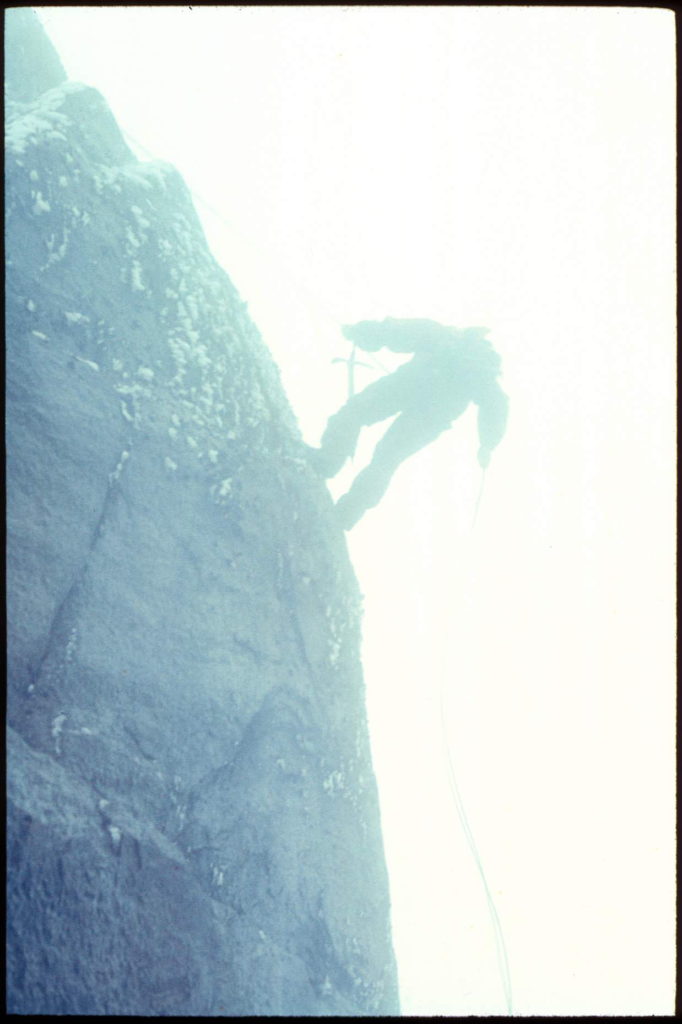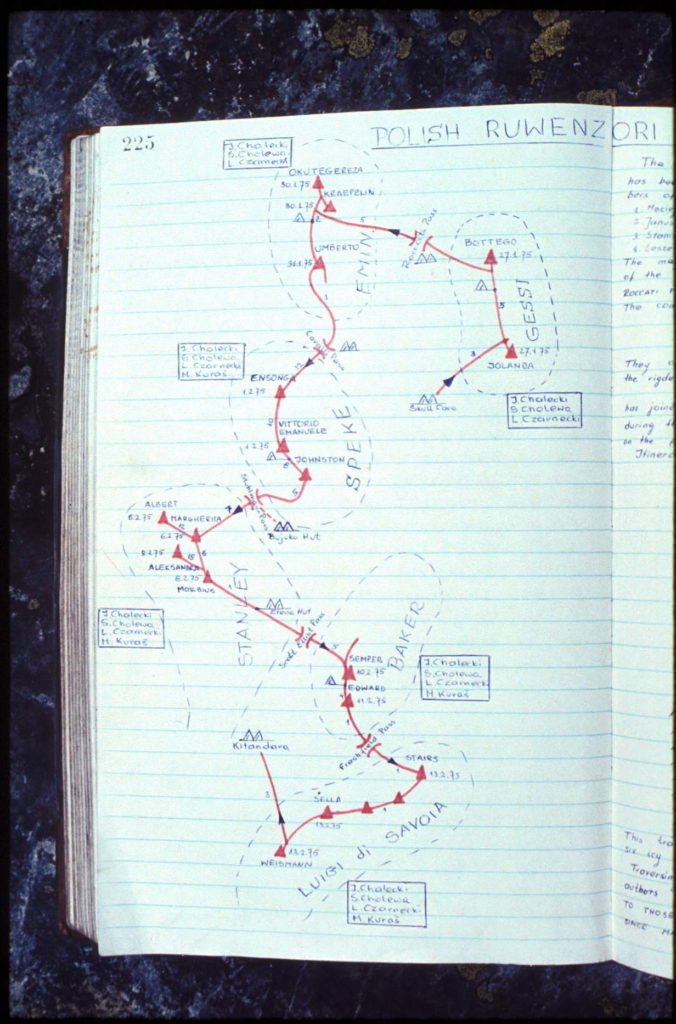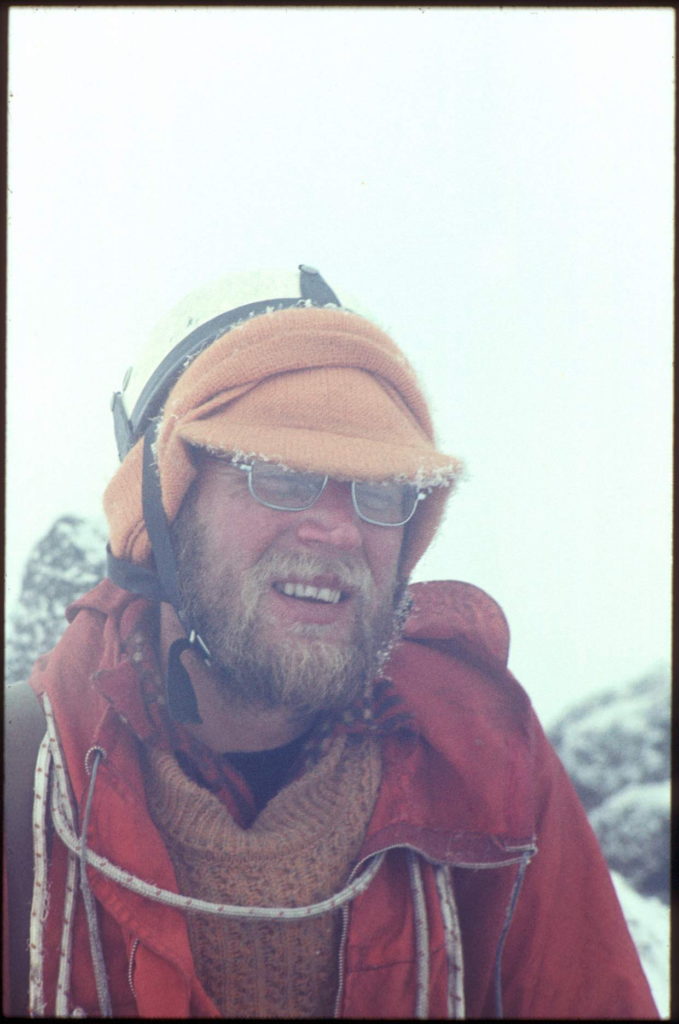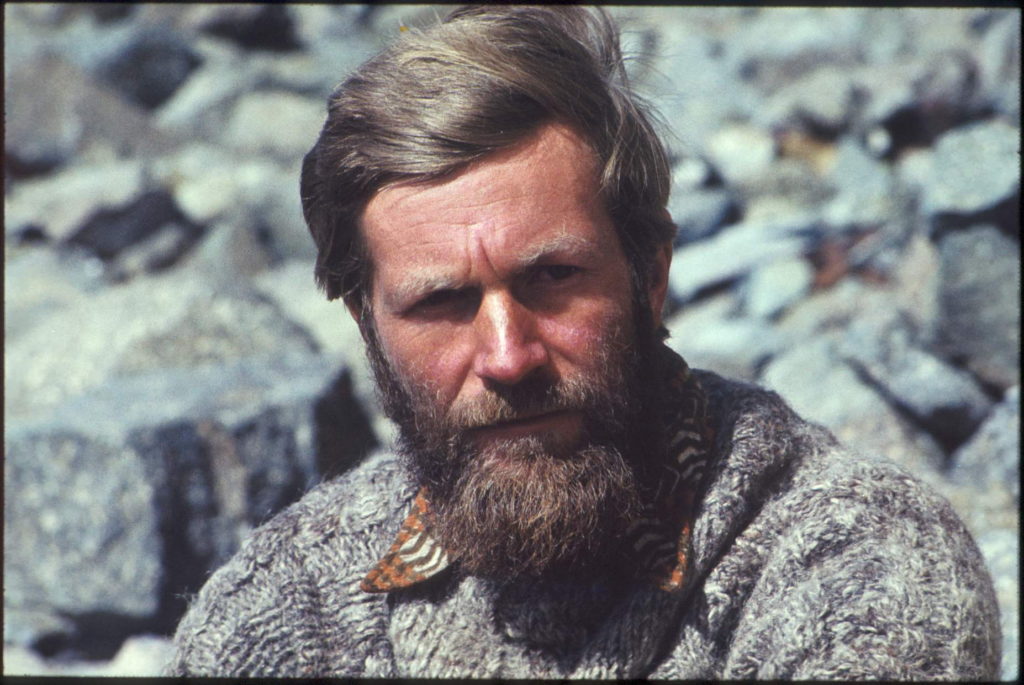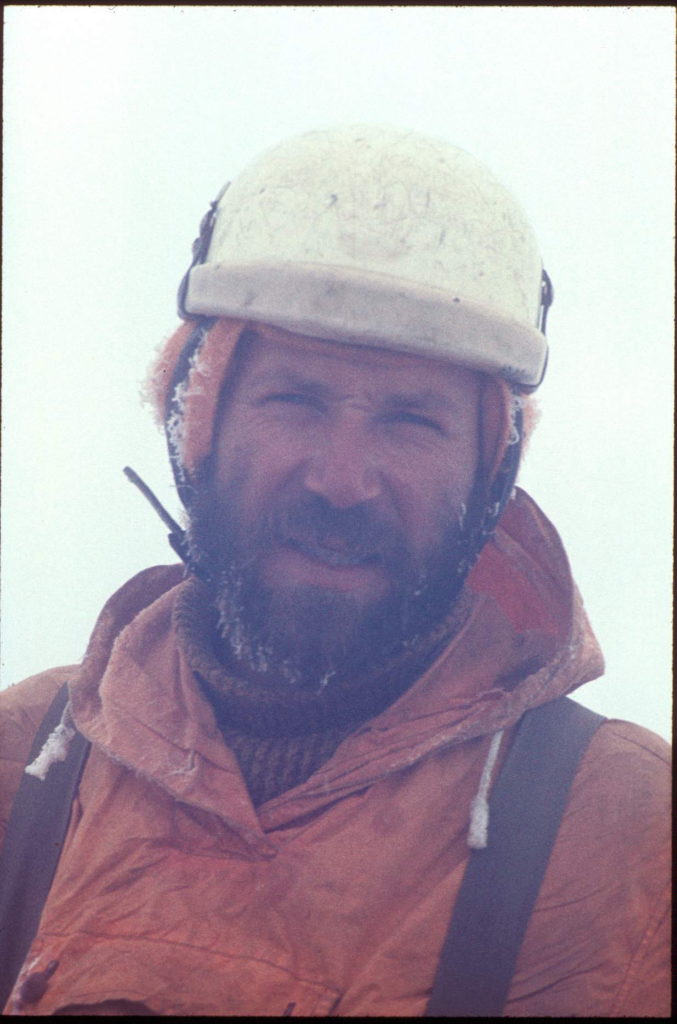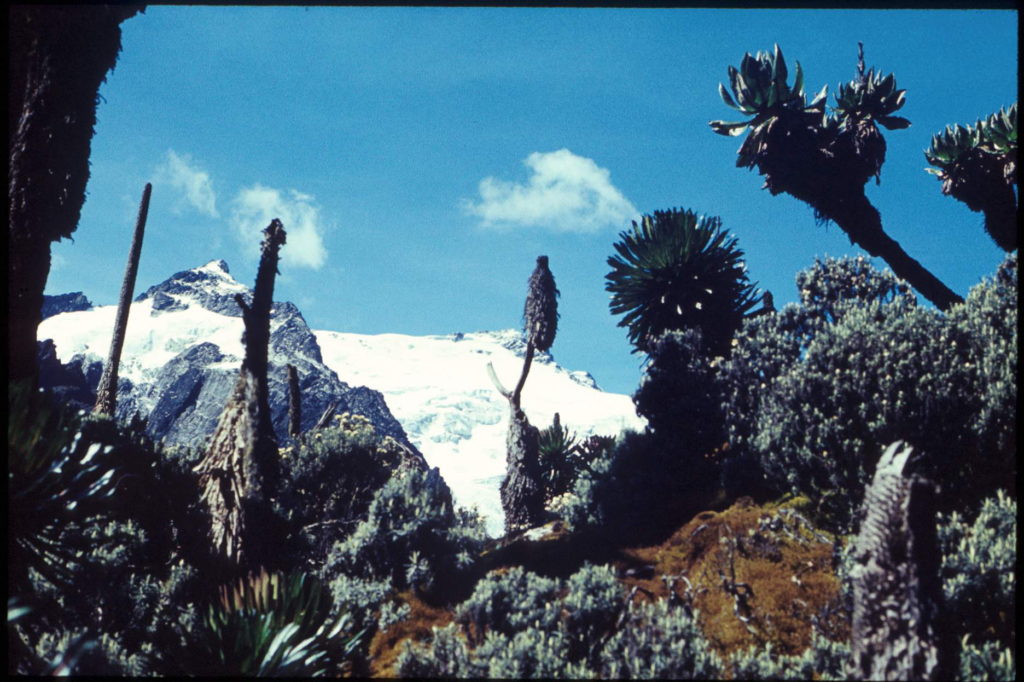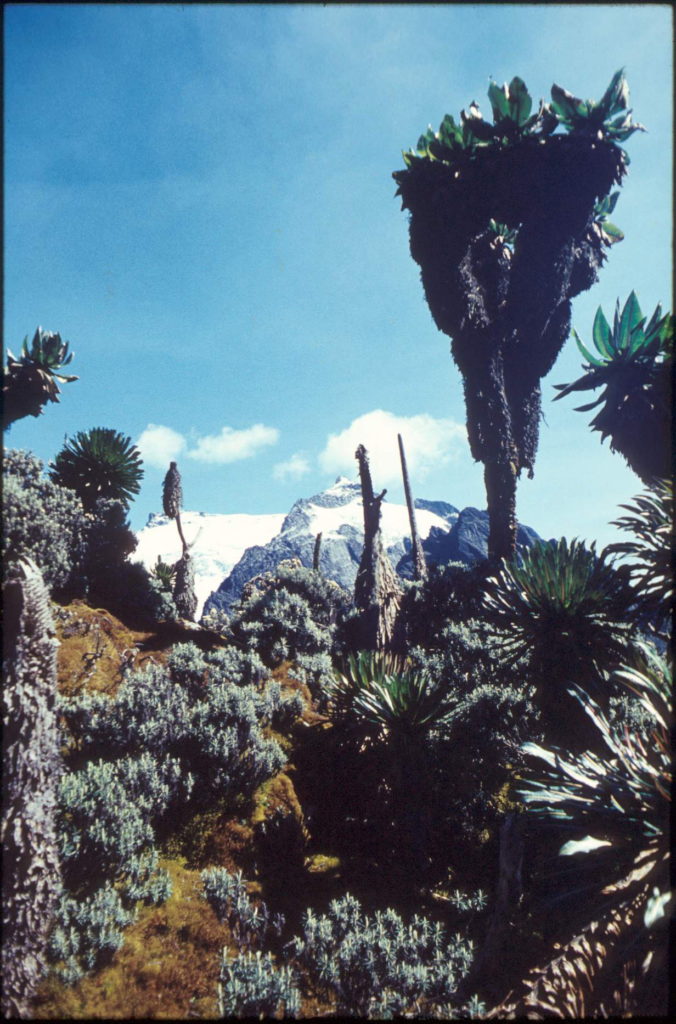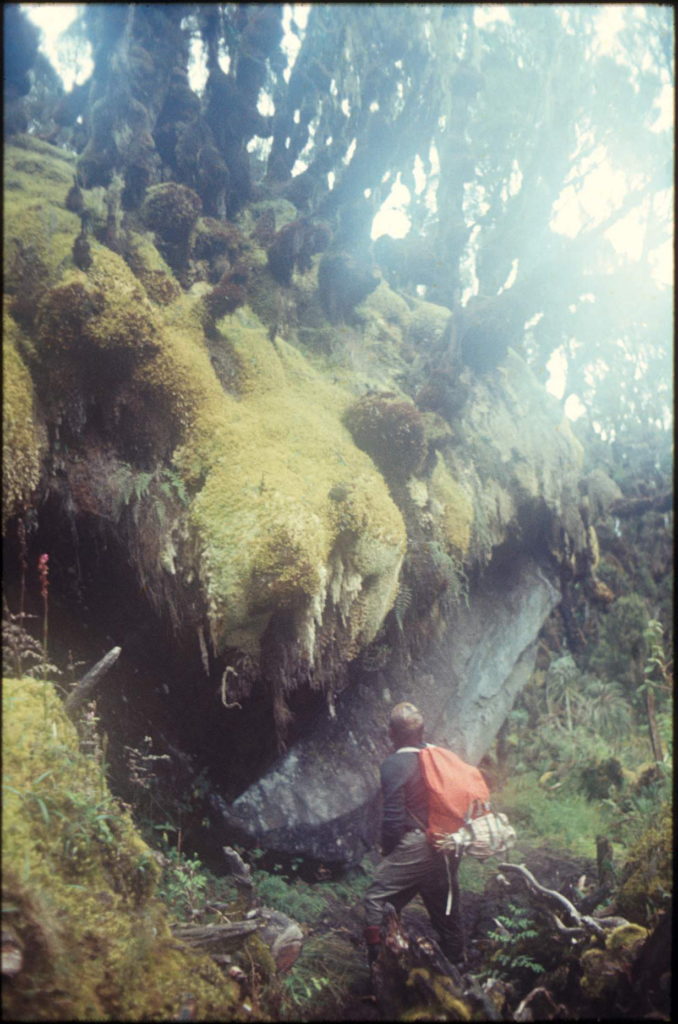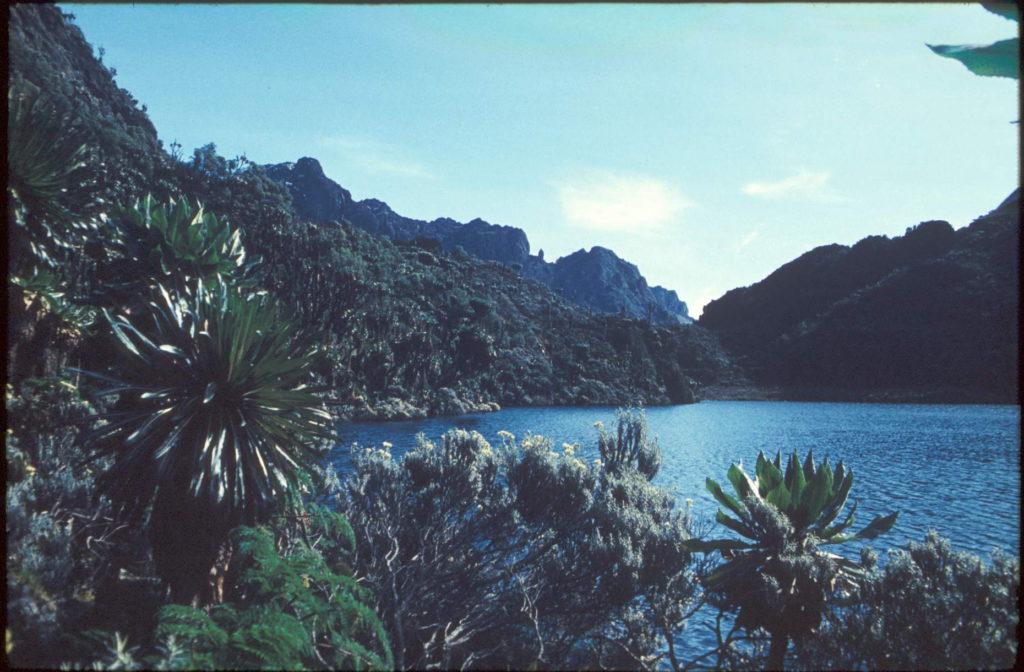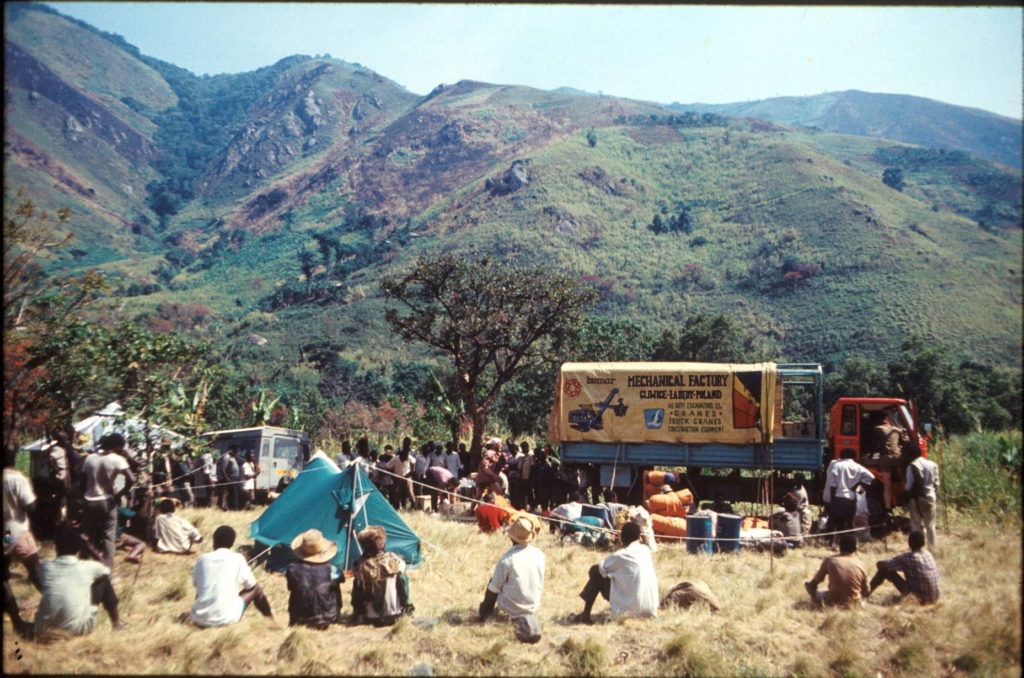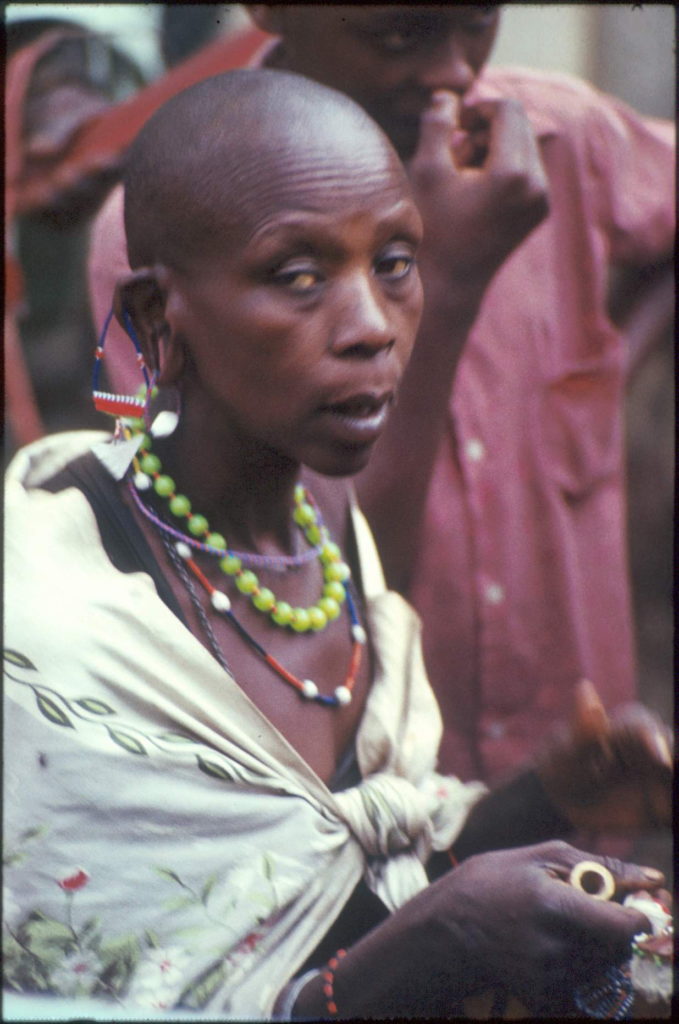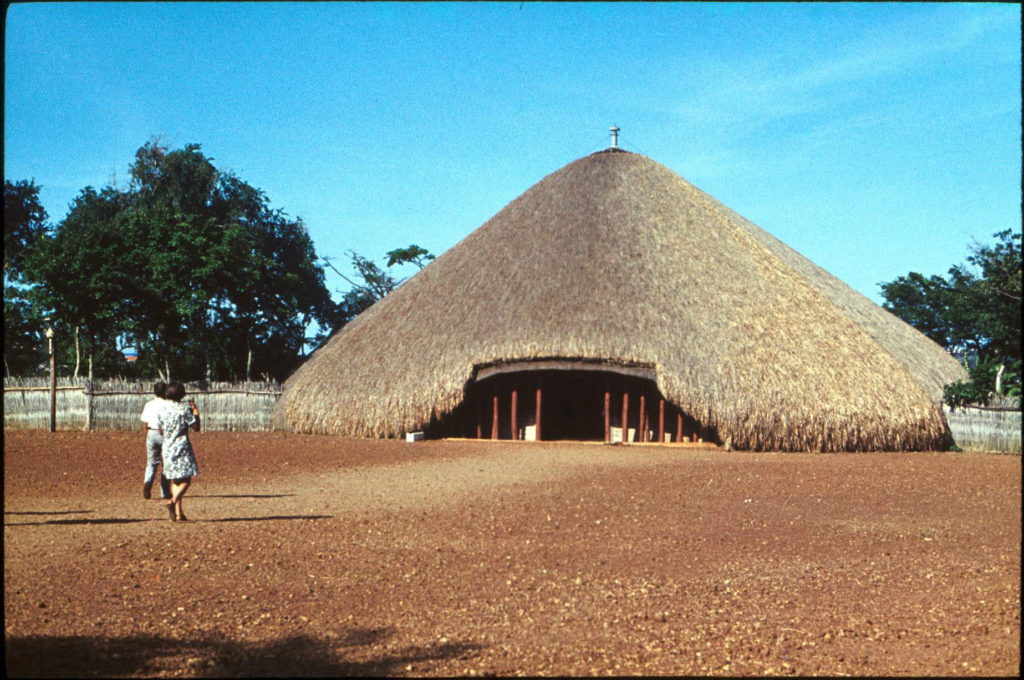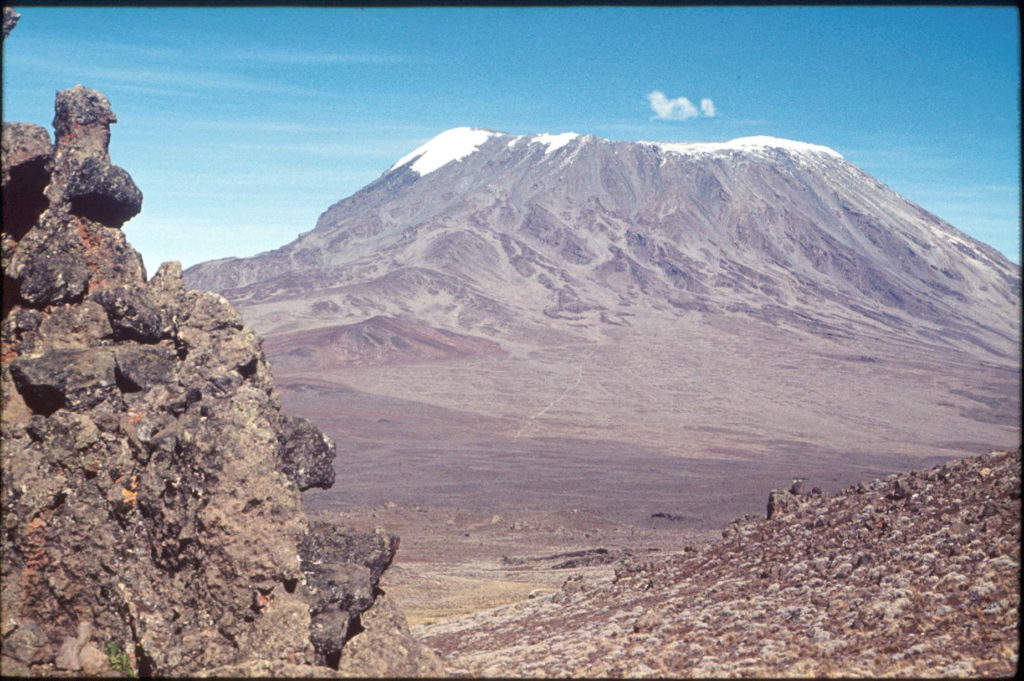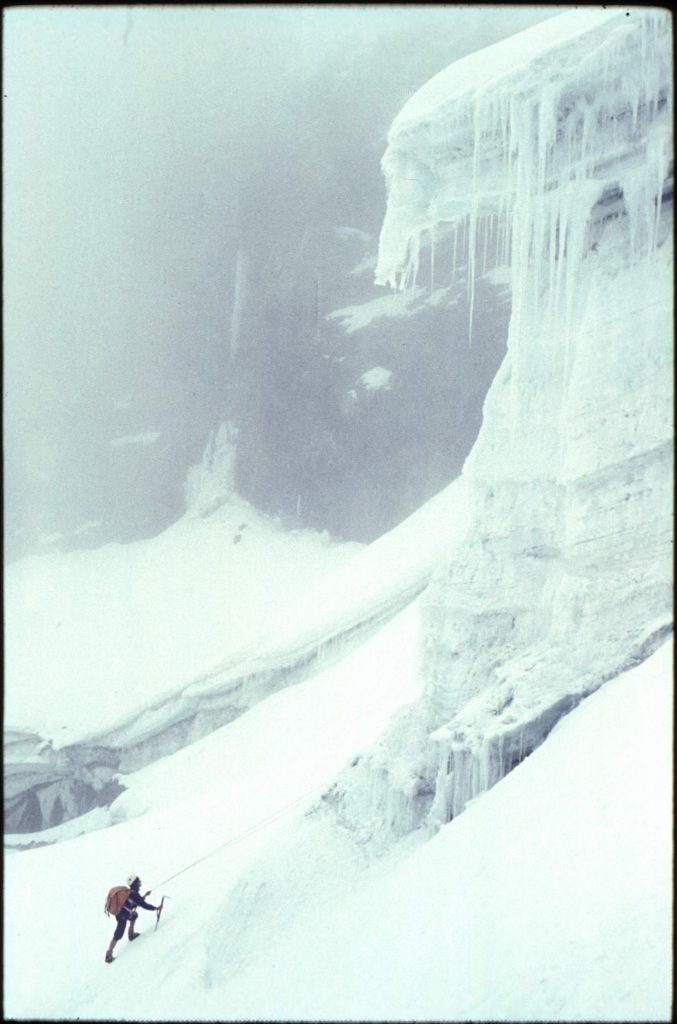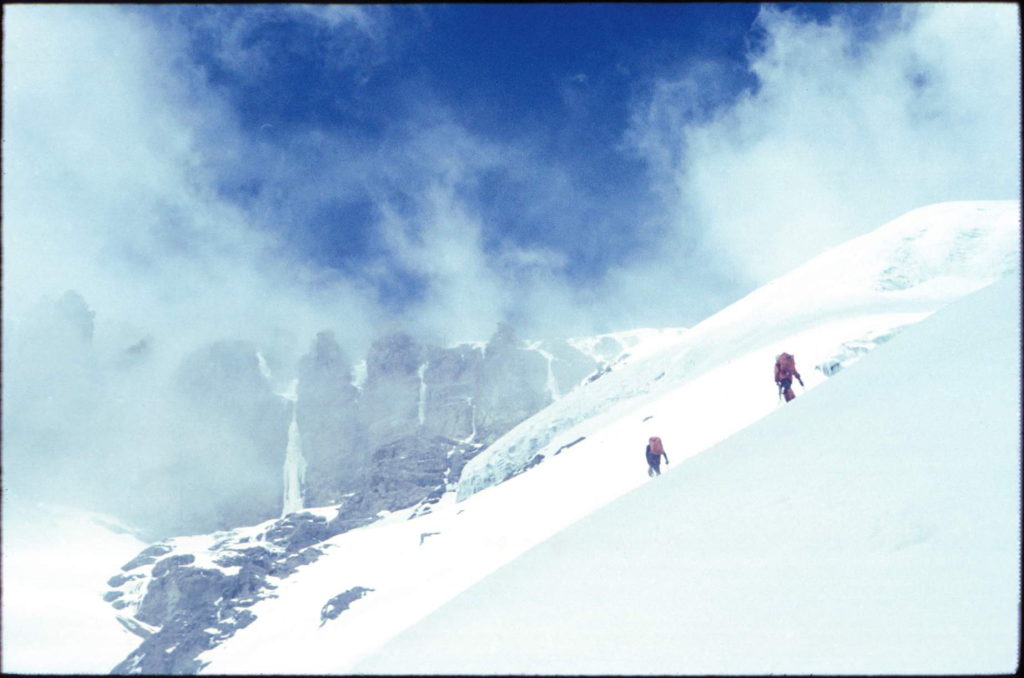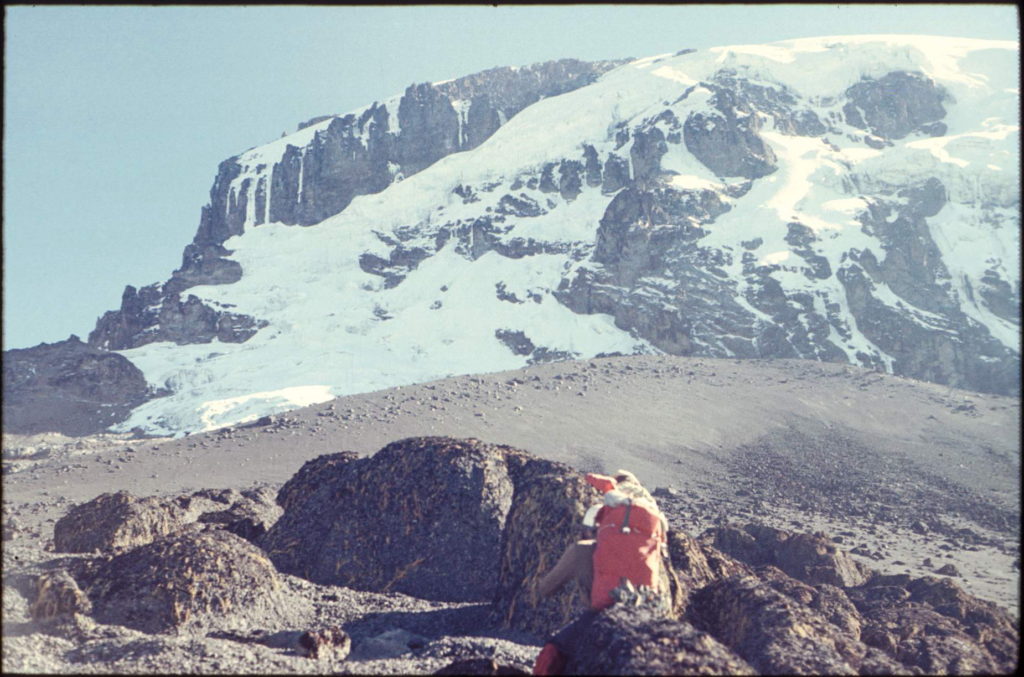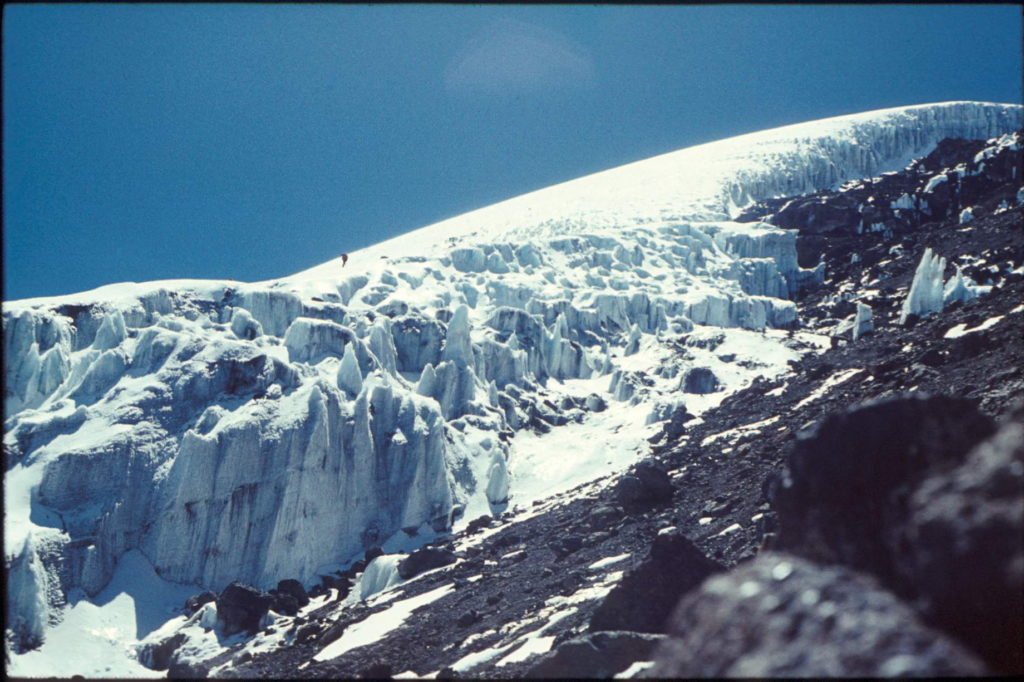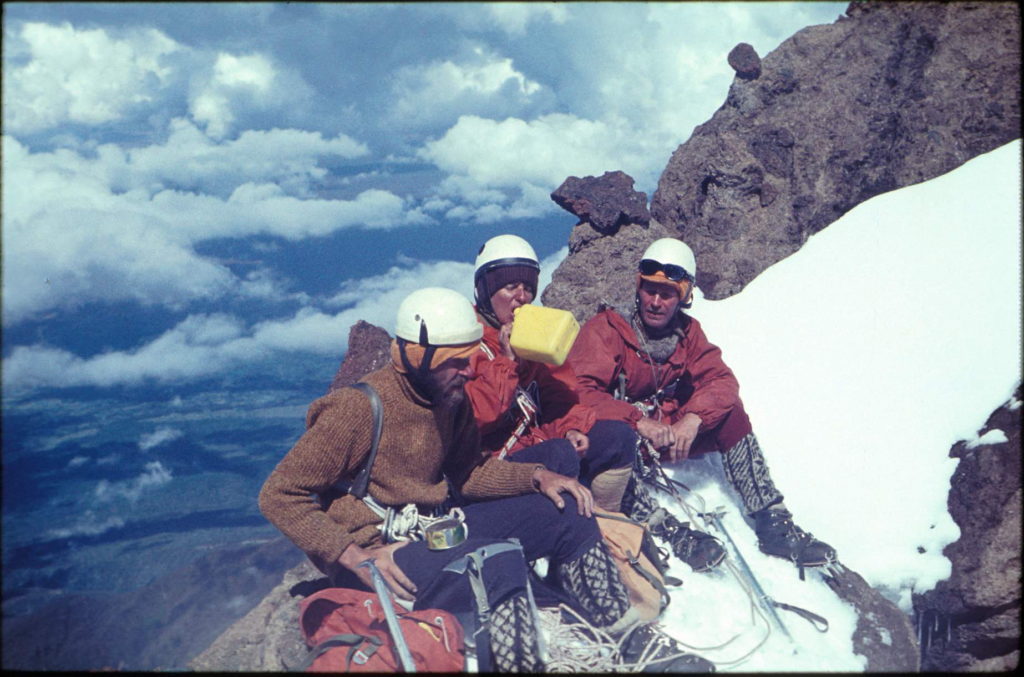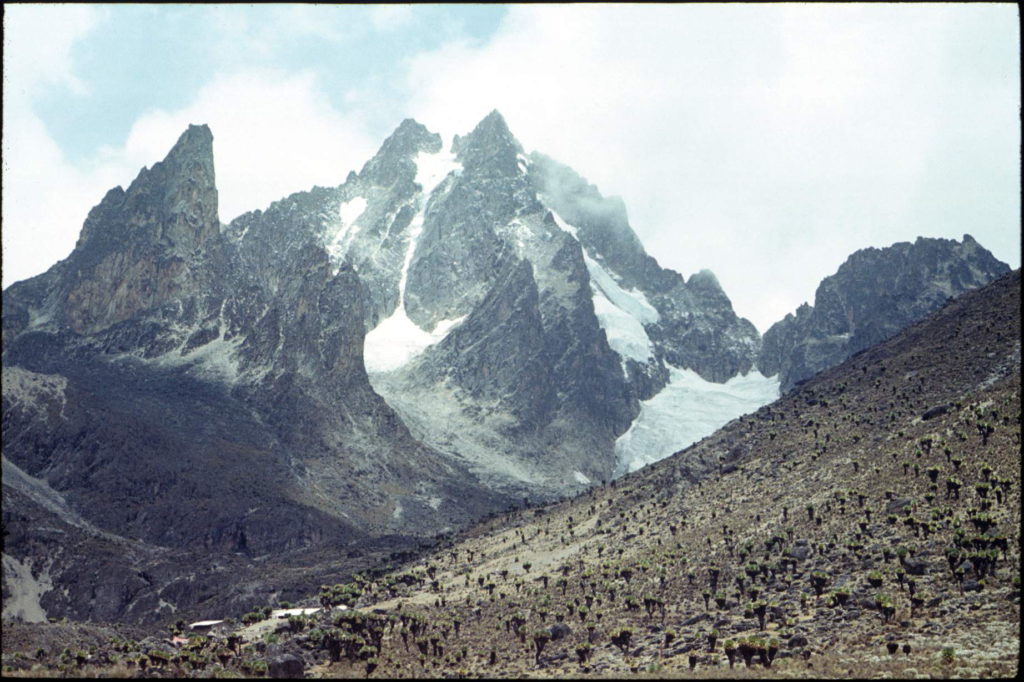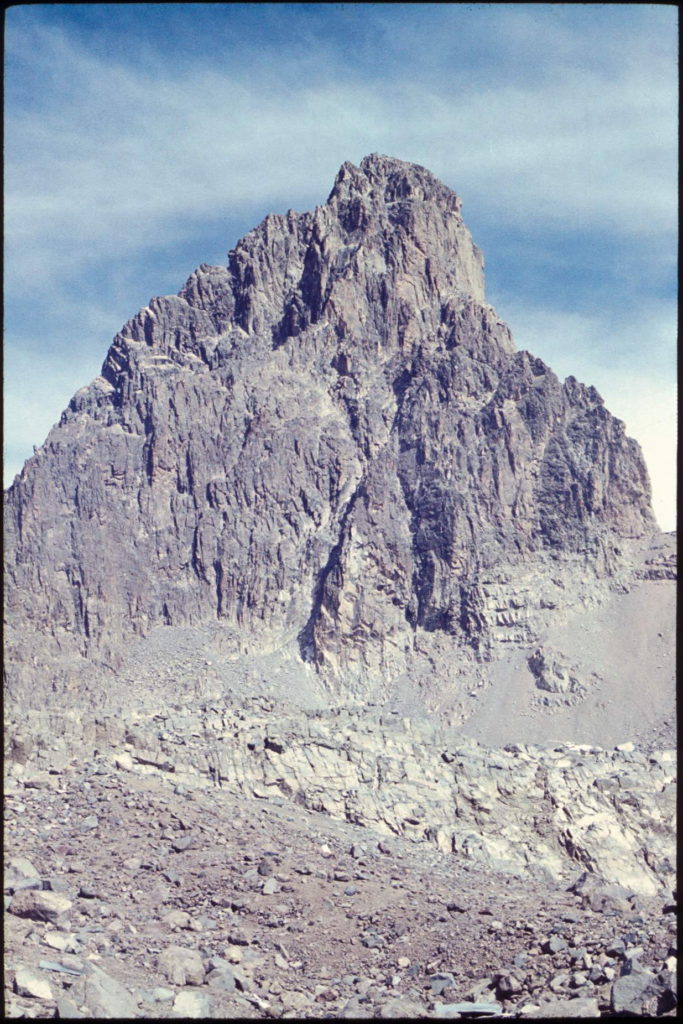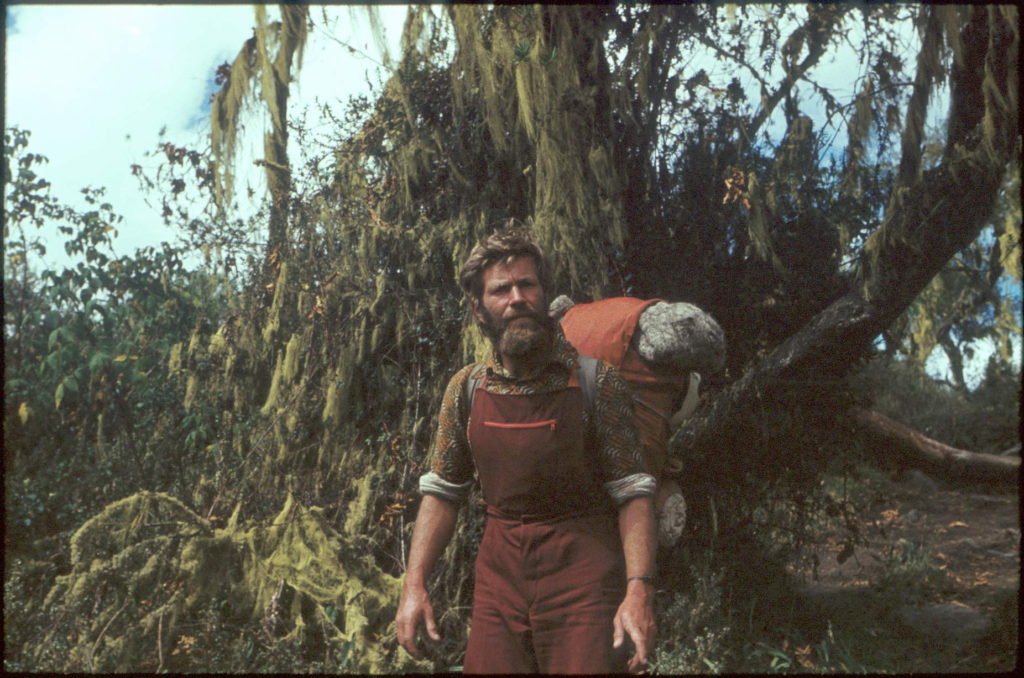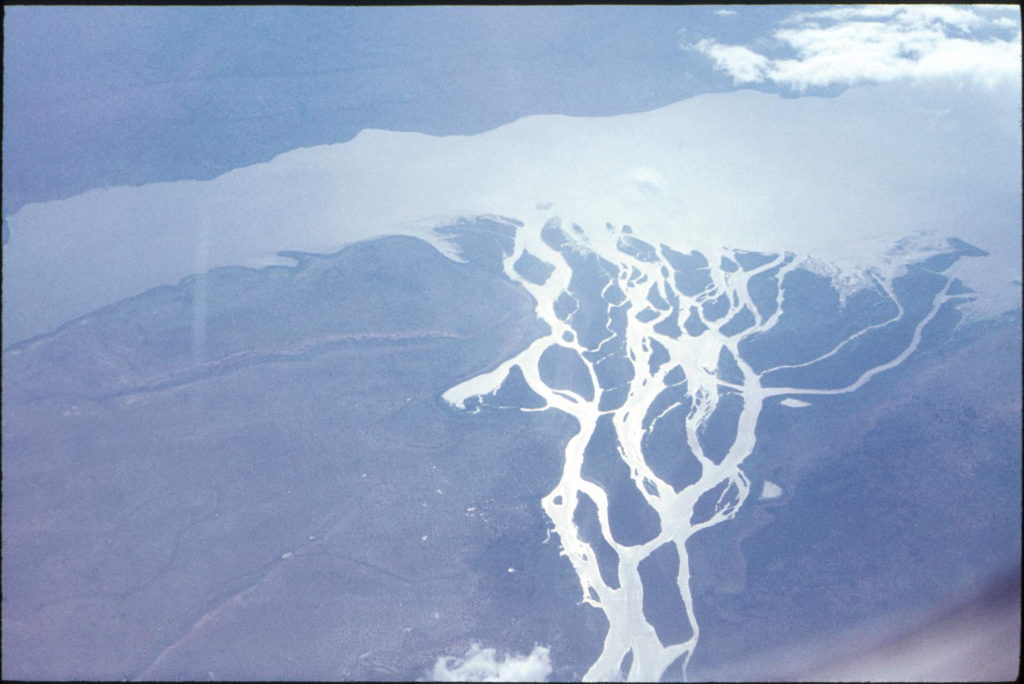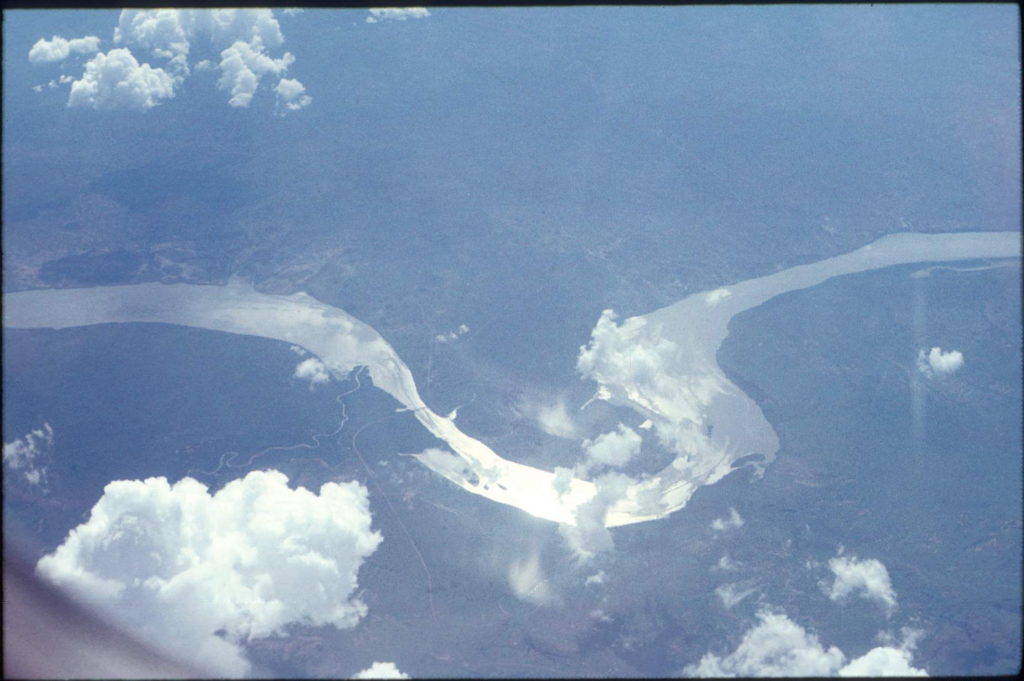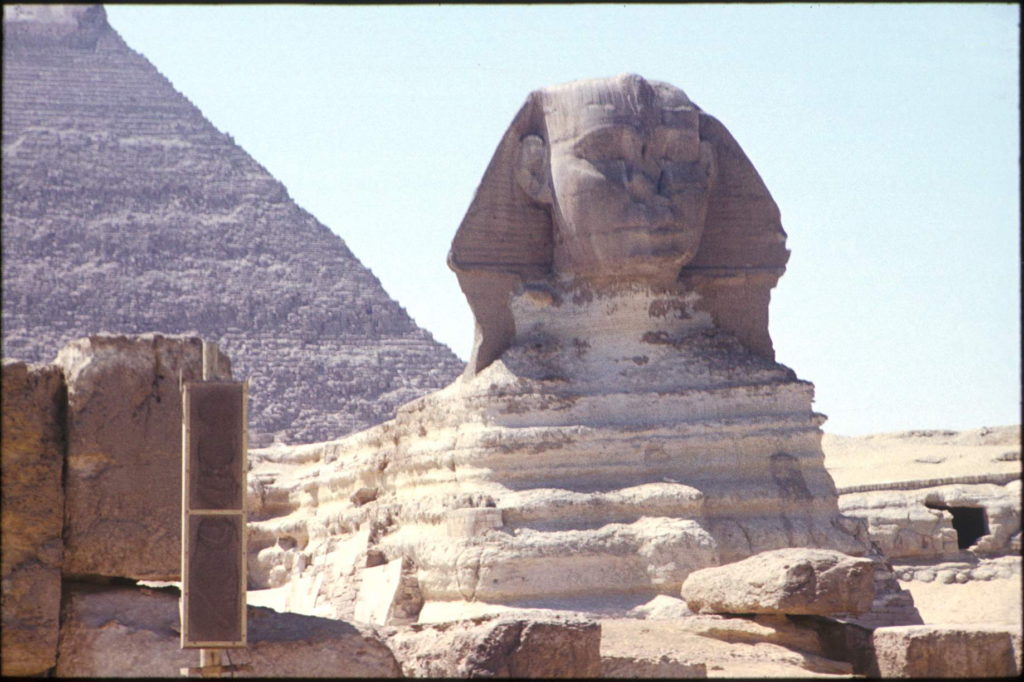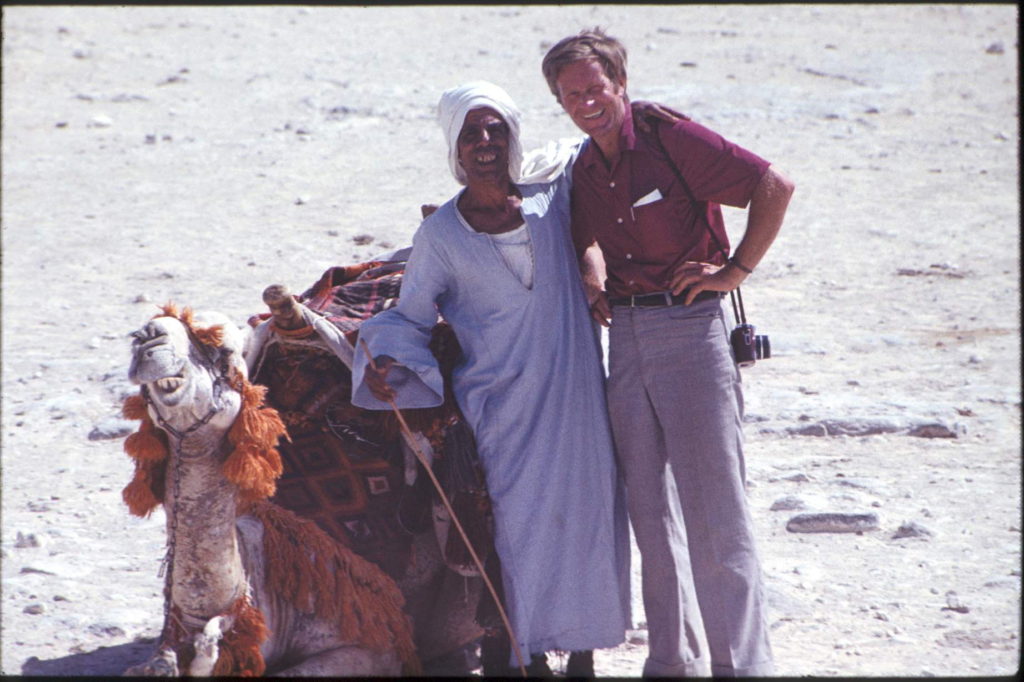Ruwenzori – Moon Mountains
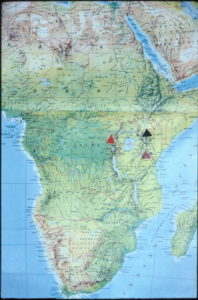 The existence of Moon Mountains, presently known in Bantu language as Ruwenzori (Rainy Mountains), according to ancient Greeks, the alleged source of Nile River, was one of the greatest mysteries of Africa geography for centuries. Eventually, Henry Morton Stanley confirmed in 1896 their existence and explained the mystery. A tectonic ridge, almost on the Equator, grows up to the high of 5113 m above a tropical humid basin of the Congo River, is almost permanently covered with dense rainy clouds. Looking at them, no one could guess that these clouds hide mountains higher than the Alps. At the same time, at the annual rainfall at the level of 500cm, it is almost impossible to enter them. It is possible in a short time-window in a dry season, on the condition that the season is particularly dry, however.
The existence of Moon Mountains, presently known in Bantu language as Ruwenzori (Rainy Mountains), according to ancient Greeks, the alleged source of Nile River, was one of the greatest mysteries of Africa geography for centuries. Eventually, Henry Morton Stanley confirmed in 1896 their existence and explained the mystery. A tectonic ridge, almost on the Equator, grows up to the high of 5113 m above a tropical humid basin of the Congo River, is almost permanently covered with dense rainy clouds. Looking at them, no one could guess that these clouds hide mountains higher than the Alps. At the same time, at the annual rainfall at the level of 500cm, it is almost impossible to enter them. It is possible in a short time-window in a dry season, on the condition that the season is particularly dry, however.
In 1975, Polish Expedition, run by Tadeusz Wojtera and composed of 11 mountain climbers: Bernadt, Chalecki, Cholewa, Czarnecki, Konopka, Kuraś, Kwaśniok, Oczko, Łuckoś, and Pallus, as well as expedition’s car driver, Smela, and cameraman, Grodzki, in two months travel rounded Africa on a ship from Poland to Mombasa, and drove across Kenia and Uganda to footsteps of Ruwenzori, intending to climb the Main Ridge of Ruwenzori.
With the help of 70 local porters, we traversed a tropical jungle with endemic plants and wildlife. We see giant lobelias with two-meter high flower columns; giant senecias, like huge candelabras, with dead leaves like old people beards; hyraxes resembling gophers, but the closest cousins of ….. elephants. We had to cross almost impenetrable marshes at the level up to 3500m, to reach the alpine range with rocky slopes covered by deep mud, moss, and dense bush of helichrysum with platinum-like flowers, to finally look at shiny glaciers which cover this, close to the Equator located and almost impenetrable mountains. Only Kilimanjaro, Mt. Kenya, and Ruwenzori have such permanent glaciers in Africa.

Before climbing in thin air with only 2/3 of oxygen, we took one-week acclimatization at the Moon Lake, located at the level of 4000m. One stream from this Lake runs eastward to White Nile, the second stream runs westward to the Congo River. Ancient Greeks were right.
After acclimatization, a team composed of Janusz Chalecki, Leszek S. Czarnecki and Stanisław Cholewa as the team leader, has started to climb the Main Ridge of Ruwenzori, composed of 19 summits of the average high of 5000m. In snow, rainfall, and dense fog, that sometimes hide even the partner at the rope, day in day out the team climbed the summit after summit without going down from the Ridge. It took 18 days to complete climbing of the whole Main Ridge of Ruwenzori (see Wikipedia). Just as the climbing was completed, Ruwenzori has shown up in its incredible beauty: with shiny ice cupped summits, deep green walleyes; looking in the sky, blue and green lakes…
As to an expert and a historian on African mountaineering, our historically first climbing of the Main Ridge of Ruwenzori was the greatest mountaineering achievement in Africa in more than 70 years.
After a rest, Cholewa and Czarnecki climbed Uhuru Pick in Kilimanjaro (5895m), the highest mountain in Africa, by a difficult Heime Glacier, and with Konopka and Kuraś also Mawenzi (5146m), as well as two summits, Nelion (5188m) and Batian (5199m), in Mt. Kenya. Thus, during this Expedition, almost five months of duration, we climbed all African mountains higher than 5000m. This included also Mt. Margherita (5113m), Mt. Alexandra (5091m), and Mt. (Albert (5087m) in Ruwenzori.
